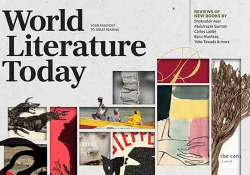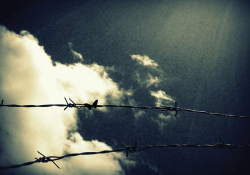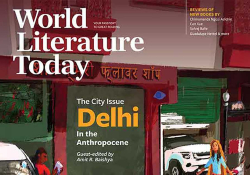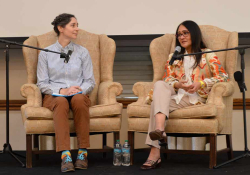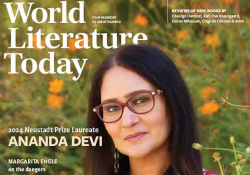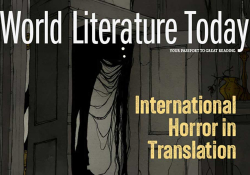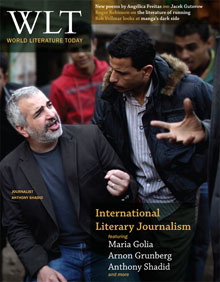EDITOR'S NOTE
In the end, it's about stories, and if I've learned one thing in fifteen years of being a foreign correspondent, only stories matter. – Anthony Shadid, "The Truths We Tell: Reporting on Faith, War and the Fate of Iraq" (2010)

If 2011 will ultimately be remembered as the Year of the Protester (Time, December 26, 2011), WLT would like to pause momentarily, before the events of 2012 outrace our news feeds, to recognize the vital role of journalists in bringing that roiling dissent to our attention. As Russian essayist Nadezhda Azhgikhina acknowledged in our November 2011 issue, journalists around the world push back against barriers of censorship in the pursuit of truth: they "understand their duty," Azhgikhina writes, "to inform their readers and to serve justice," often putting their lives in danger for the sake of freedom of expression. Part of that freedom also lies in the desire of journalists to present those stories in compelling ways, beyond "just the facts." And that is where literary journalism, the focus of this issue's feature section (page 32), begins.
As Norman Sims notes in his introductory essay, literary journalism is not journalism about literature, nor is it fiction that adopts journalistic techniques—rather, it's a type of creative nonfiction or documentary prose. "Literary journalism," he writes, "involves immersion reporting for a year or longer, the active presence of the author in the narrative, and tools long associated only with fiction such as elaborate structures, characterization, and even symbolism, but with the added requirement of accuracy." In the U.S., literary journalism is most often equated with the New Journalism of writers like Capote, Wolfe, Didion, and Thompson, published in such magazines as The New Yorker, Esquire, Harper's, New York, Rolling Stone, and Vanity Fair in the countercultural heyday of the 1960s and '70s. Sims argues, however, on behalf of a robust tradition of international literary journalism that crosses borders of culture, language, and time as well as such systemic barriers as gender, class, and race.
It could be argued—as any student of postmodernism would tell you—that journalism is inevitably literary, that there is no such thing as unvarnished reportage. Language itself is not a mirror held up to reality, so the theory goes, and the idea of unmediated communication between writer and reader, or speaker and listener—although it might seem plausible as a vector diagram in a book—breaks down as soon as time and subjectivity are shaded in. "We all watch the same screens," says Slovenian journalist Ervin Hladnik Milharčič, "but we see different pictures" (page 37). And even as journalists strive for the truth, by filtering their third-person narratives through a first-person perspective, they inevitably take sides; Milharčič argues that "being impartial has nothing to do with neutrality."
In the end, truth is such a loaded term that it seems safer to take one's stand on fact, although many a good journalist has been hoisted on that petard. In her essay on Dutch journalist Arnon Grunberg (page 60), Agnes Andeweg writes that "realism can be understood as the privileged access to truth only when truth is just conceptualized in terms of the correspondence between representation and fact. Truth and reality are two different things." Once we get comfortable with the long slog up the hillside from fact to representation to truth, we realize that the linchpin is still representation, as slippery as that term proves to be. And for literary journalists, that's right where the action is.
Albert Camus, who edited the French Resistance newspaper Combat during World War II, famously concluded in "Le mythe de Sisyphe" (1942) that "the struggle itself toward the heights is enough to fill a man's heart." Although Sisyphus, doomed to roll his rock for eternity, might seem like a cursed figure, to a writer like Camus, as long as the struggle continues, there must be witnesses to tell the story. And as long as we're in need of story, starting out at the base of the mountain every day is as good a place as any to begin.
Editorial note: Special thanks to David Abrahamson of Northwestern University, secretary of the International Association for Literary Journalism Studies (www.ialjs.org), for his guidance in helping assemble this issue's special section. For an excellent historical overview of literary journalism, see John C. Hartsock's entry in Books and Beyond: The Greenwood Encyclopedia of New American Reading (2008), 2: 571–85.
